Having breathing problems often limits people with chronic diseases and is a hassle in milder cases, to say the least. Most problems related to the respiratory system involve inflammation in the respiratory tract. In TCM, however, breathing difficulties can also be related to digestive problems, and to your diet in general. We now know also, that eating sugary and highly processed foods regularly can increase inflammation greatly. Therefore, the treatment with acupressure points for breathing difficulties is aimed at correcting the dynamics of Qi that cause, or become disrupted by disease and cause problems and difficulty breathing.
What Causes Breathing Difficulties?
Allergies and viral infections can cause respiratory disorders and bacteria infecting the lungs and respiratory tract. The heart is closely connected to the lungs through the circulatory system, and heart problems can also affect breathing. Among heart problems that can affect your breathing are heart failure, tachycardia, and cardiomyopathy, to name a few. Central nervous system dysfunctions, triggered by stress and anxiety, can affect the way your lung tissues react to the your environment, and can also affect your body’s cortisol levels. And when these are out of balance, it can also lead to breathing difficulties.
One of the most common factors involved in breathing problems is inflammation in the respiratory tract. People who tend to suffer from allergies and inflammation should pay special attention to their diet and avoid sugary and highly processed foods at all costs. While fermented foods can decrease the markers of inflammation, its possible to get allergic reactions from fermented food due to histamine contaned in them that we may be intolerant to. Heart conditions are more severe causes of breathing difficulties. However, acupressure points for breathing difficulties can be used as an adjunct treatment since stimulating them has no side effects.
Can Acupuncture Help To Breathe Better?

Acupuncture can treat a wide variety of pathologies that cause breathing difficulties. It’s essential to consider each case individually since this symptom has many possiblecauses. Check your habits. If you are a smoker, have a sedentary lifestyle, or eat poor-quality foods, these habits probably affect your breathing capacity.
Acupuncture for breathing difficulty can be beneficial in many cases. In China, where acupuncture originated, the treatment with acupressure points for the lungs and heart is efficiently carried out either as the primary therapy or adjunct treatment and is done according to the TCM diagnosis. In modern days, many scientific studies are being done in an attempt to translate and measure the results of acupuncture in Western terms. One study carried out in China on chronic obstructive pulmonary disease patients shows the positive effects of treating certain acupuncture points for breathing difficulties in COPD.
In another study, the preliminary data endorsed the treatment with acupuncture as possibly beneficial in patients with heart failure. We can see from the traditional literature as well as from modern scientific methods that acupressure points for shortness of breath can potentially be beneficial in many syndromes that affect the respiratory system. The traditional Chinese medicine approach is unique, and its complete translation to Western terms might not be possible. TCM system stands on its own, and its thousand-year-old pragmatic approach is paramount in establishing its validity.
What Are The Acupressure Points For Breathing Difficulties?
For COPD
Acupoint: LI-18 (Other Names: Large Intestine-18/Fu Tu/Beside the Prominence)
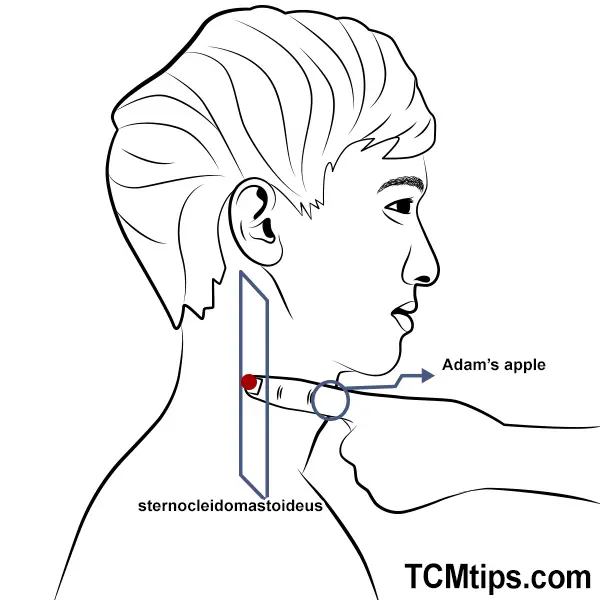
According to Dr. Gene Wei, you can find this acupoint on the lateral side of your neck, level with the tip of the Adam’s apple.
This point is also known as Futu, and it has been one of the traditionally used acupressure points for COPD. LI-18 treats local ailments, such as problems in the throat region, loss of voice, and breathing difficulty. In addition, recent scientific findings show that the stimulation of LI-18, together with other acupoints, is beneficial in the treatment of obstructive pulmonary disease by reducing dyspnea.
Massage this point using your index and middle fingers to apply gentle pressure and slight movement for about 3 minutes. Release the stimulation intermittently.
Acupoint: GB-12 (Other Names: Gallbladder-12/Wan Gu/Mastoid Process)
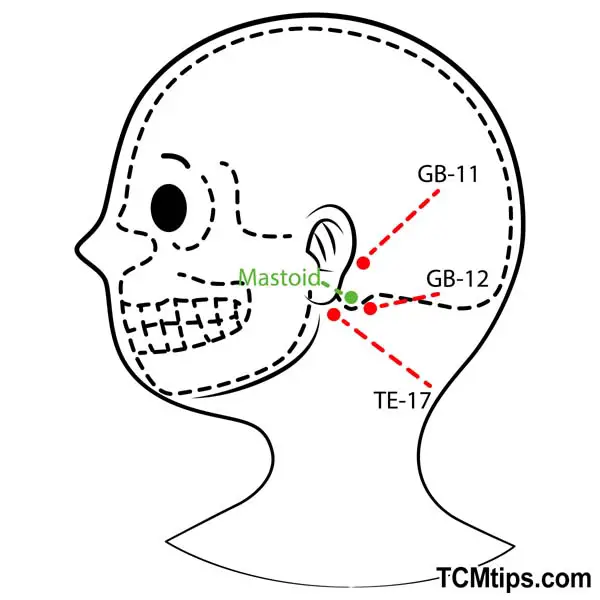
This point is located on the neck, in the depression behind and below the mastoid process. Due to its location, GB-12 is among the acupressure points for female pattern baldness.
GB-12 traditionally regulates disharmony between the head and the body. It also regulates disorders of the Heart and soothes agitation. Together with LI-18, this point has been used in a randomized trial study which has shown its efficacy in treating dyspnea in patients with obstructive pulmonary disease.
Massage this point using your index and middle fingers to apply gentle pressure and slight movement for about 3 minutes. Release the stimulation intermittently.
Fo COVID-19
Acupoint: KI-3 (Other Names: Kidney-3/Tai Xi/Supreme Stream)
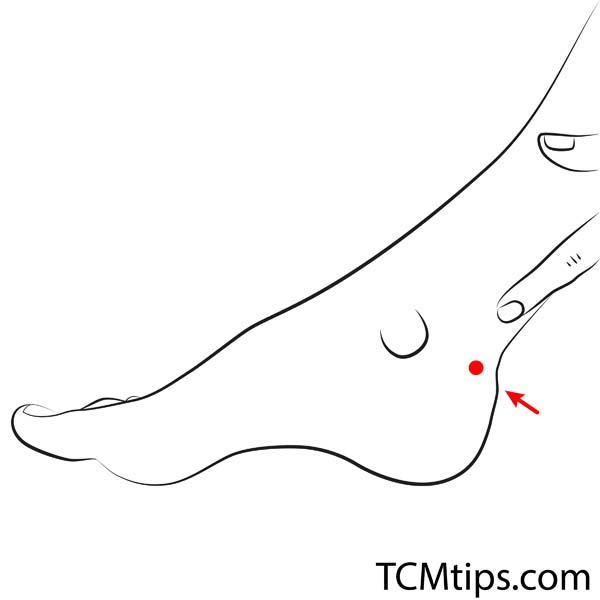
KI-3 Taixi is located on the inner side of the feet, level with the malleolus’s prominence, between the bone and the Achilles tendon.
This point is among the most used acupuncture points in clinics. The reason is that Taixi is the Yuan-source point of the Kidney channel, where it is possible to nourish the organ with Qi. Since the Kidneys are said to be the source of Yin and Yang of the whole body, the good health of the Kidneys is of utmost importance for all the body’s processes. Taixi are commonly used in acupressure for dementia as well.
During the pandemic, a clinical case has been reported in China of an 81-year-old female who had Covid and received acupuncture treatment at KI-3 together with a couple of other acupoints. In the report, it was registered that she could breathe more deeply and easier since her chest and lower abdomen relaxed after the first acupuncture session.
You can apply firm pressure at this point using your thumbs for three to five seconds, release it and repeat for about three minutes.
For Hypertension
Acupoint: Bl-14 (Other Names: Urinary Bladder-14/Jue Yin Shu/Absolute Yin Transporter)
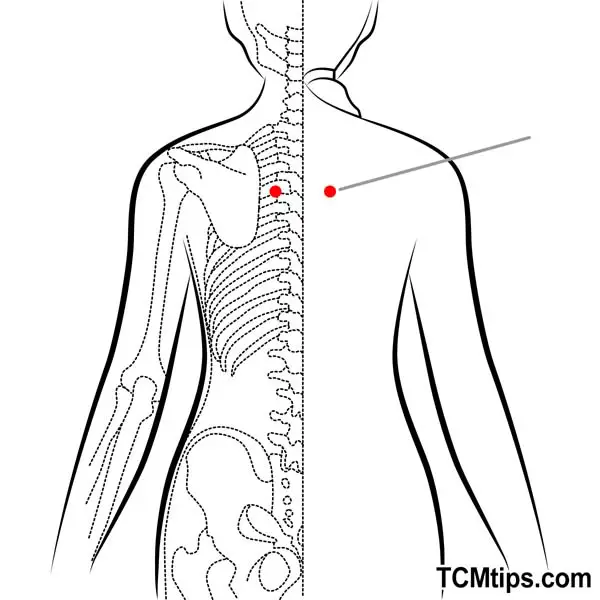
Bl-14 can be found on the paravertebral muscles two finger-breadth apart from the lower border of the spinous process of T4.
This acupoint is the Back Shu point of the Pericardium. Dr. Gene Wei explains that this is where the Qi enters the associated organ from most exterior layers. It’s a significant point to nourish the Pericardium and Heart and treat Heart problems. It is one of the best among all acupressure points for heart palpitations. Due to its helping spread Qi, this acupoint’s stimulation releases oppression in the chest, palpitation, pain in the diaphragm due to Qi blocked in the area, and shortness of breath.
This acupoint should be pressed firmly for three to five seconds, releasing and repeating the pressure for about three minutes.
Acupoint: Ren-14 (Other Names: The Conception Vessel-14/Ju Que/Great Palace)
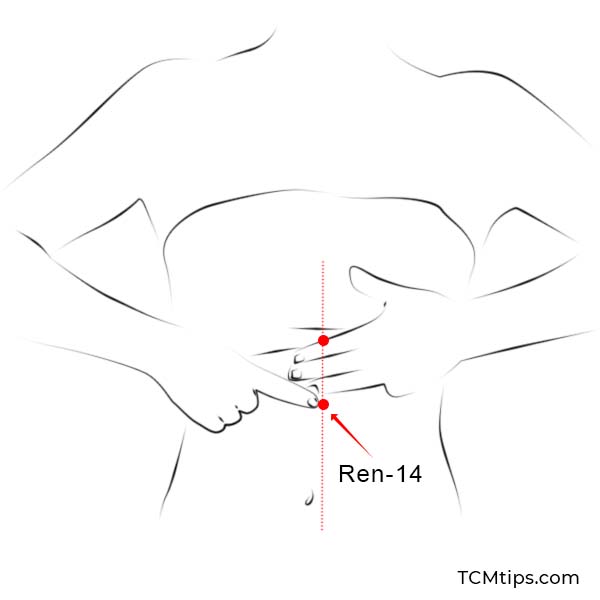
Ren-14 can be found on the midline of the abdomen by placing your two hands above the navel except for the thumbs.
This is a powerful acupoint that benefits the entire chest and thoracic region. It regulates the Heart, alleviates pain, and harmonizes the dynamics of Qi in the Lungs, unbinding the breath. In cases of phlegm, the stimulation of Ren-14 helps to metabolize the excessive mucus in the lungs. The benefits of this acupoint for the Lungs and Heart are many. It greatly stimulates these two organs and helps to achieve homeostasis. In addition, ren-14 is among the acupressure points for eczema.
You can press on this point with your middle finger while keeping the abdomen relaxed and move it slightly to stimulate it, alternating between pressure and release for about three minutes daily.
For Arrhythmia
Acupoint: PC-6 (Other Names: Pericardium-6/Nei Guan/Inner Pass)
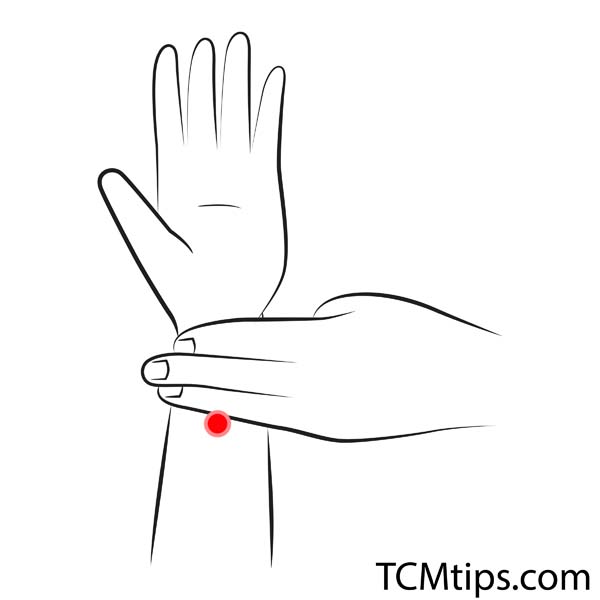
You can find PC-6 Neiguan by placing your index, middle, and ring fingers on your wrist and touching the crest. PC-6 is at the side where your index finger ends.
Neiguan is a major point in the treatment of all Heart problems. It’s handy in acupressure for heart health in general. The stimulation of PC-6 opens the chest and is helpful in the treatment of heart pain, palpitations, asthma, arrhythmia, stiffness of the chest and diaphragm, anxiety, insomnia, and so forth. The stimulation of this acupoint can help breathing difficulty caused by heart problems, as well as by the blockage of Qi in the diaphragm.
You can use your thumb to press this point alternating between pressure and release for about three minutes.
Takeaways
The reason you’re having difficulty breathing can be many. It’s important to see a doctor in case you can’t breathe normally. The use of acupressure points for breathing difficulties addresses the dynamics of Qi in the inner organs, regulating and harmonizing the different aspects of respiration. Some scientific researches show the efficacy of acupressure points for better breathing in treating disorders that affect breathing, such as chronic obstructive pulmonary disease, Covid, and heart failure.
- LI-18 is located close to the Adam’s apple and is used in research on the treatment of COPD.
- GB-12 harmonizes head and body. Together with LI-18, it can treat dyspnea in chronic obstructive pulmonary disease patients.
- KI-3 nourishes the Kidneys, the source of Yin and Yang in the whole body. This point was used in the treatment of Covid-19 in a hospital in China.
- Bl-14 is the Back Shu point of the Pericardium. It releases oppression in the chest and relaxes the diaphragm.
- Ren-14 benefits the chest, regulating the Heart and unbinding the breath.
- PC-6 is the Luo-connecting point of the Pericardium. This point opens the chest and treats all Heart problems, including arrhythmia.

Try our Anti-Aging Gua Sha Tool designed to bring out your skin’s natural glow.
Best Gua Sha Product- Anti-Aging: The tool is designed to target 11 specific aging signs such as wrinkles and sagging skin. By following the 7-step routine, users can improve skin firmness and reduce fine lines naturally.
- Enhances Skincare Routine: It works effectively with serums and lotions, boosting absorption and efficacy of skincare products.
- Visible Skin Improvement: Users can expect a smoother complexion, reduced puffiness, and a more youthful appearance.
 P. Sze
P. Sze 

















